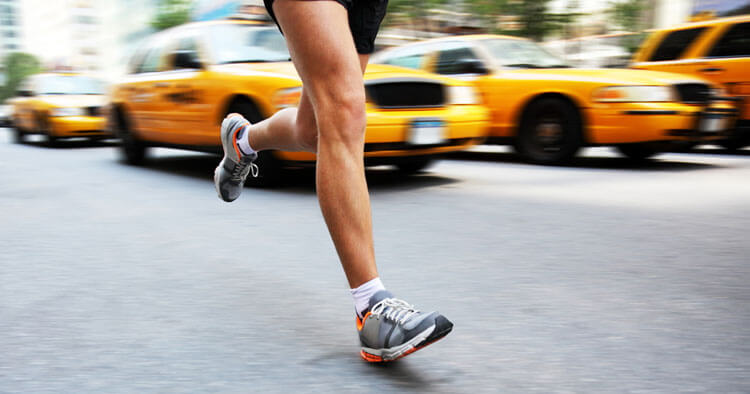Back and Joint Pain, Sports Injuries and Management
Treating Runner’s Knee
Diagnosing Runner’s Knee
An X-ray can be used to assess bony changes and signs of malalignment, where as an MRI when compared to other radiological investigations is very good at visualizing cartilage changes. The use of an MRI investigation in the diagnosis of runner’s knee, specifically regrading the grading of severity can be beneficial. However diagnosis in runner’s knee is frequently a clinical one meaning that a diagnosis is landed on following developing an understanding of the behavior of symptoms series and physical presentation of the knee and its associated structures. Any investigations are typically only used if the rehabilitation is progressing more slowly than desired, or hits a road block.
Grading Of Chondromalacia Patella
As mentioned the use of MRI can be useful in the grading of severity and this may be of benefit in the rehabilitation process in making more informed choices regarding how to progress load and outcome expectations.
Grade 1 Is the initial and least severe grade and is considered to be situation where there is softening of the cartilage.
Grade 2 Indicates softening of the cartilage associated with some abnormal surface characteristics (the beginning of tissue erosion).
Grade 3 With this grade there is thinning of cartilage, with active deterioration of the tissue.
Grade 4 Is the most severe grade and indicates exposure of the bone with a significant portion of cartilage deteriorated. This bone exposure means there is bone-to-bone contact at the knee.
Physiotherapy Treatment Of Runner’s Knee
When treating chondromalacia patella, or runner’s knee the rehabilitation process often looks to address biomechanics and load and may focus somewhat around creating “improved” tracking of the kneecap during quadriceps contraction. In the acute stage, ice and anti-inflammatory medications may be useful in managing pain but this passive approach is normally only used for a brief period of time, if at all. As a rule, relative rest from aggravating activities finding alternative loading options is necessary whilst undergoing rehabilitation. Lower load options to maintain cardiovascular conditioning, mobility, fitness… can be achieved via swimming and cycling both of which place lower loads on the kneecap.
Your physiotherapist will quite likely look to train selective muscles, one such muscle targeted by many physios in treatment of patellofemoral pain is the strengthening of the inner portion of the quadriceps muscle (referred to as the VMO) this muscle is considered to play a significant role in patella tracking. Other common muscle groups targeted are the deep gluteal muscles as strengthening the core and improving pelvic stability can assist in improved activity biomechanics and postural control. Footwear changes may also be indicated and the use of taping/bracing of the patella and stretching exercises around the knee and hip are frequently prescribed. Physiotherapy rehabilitation for runner’s knee will often aim to address and improve muscle strength and the postural control around the knee with the intention of off loading the irritated area and reducing discomfort.
What’s The Prognosis For Patients With Chondromalacia Patella?
Generally patient’s should have a rapid and full recovery of symptoms with this condition and it is also worth noting that runner’s knee is not considered to be a precursor to developing future osteoarthritis. If the condition fails to respond to conservative treatment such as rest and physiotherapy then surgical correction of knee alignment is a considered option but this is very much a last resort and in my opinion it is relatively uncommon to reach this point. If surgery is considered it is typically arthroscopic surgery to examine the joint and determine whether there’s misalignment of the knee and then if indicated a common surgical procedure used is a lateral release which serves the purpose to release tension of structures on the outside of the knee to help the kneecap track more evenly. Other surgical options may involve smoothing the backside of the kneecap, cartilage grafts, or relocating the insertion of the tendons associated with the patella to off load the irritated tissues.
Prevention Of Runner’s Knee
Preventative work around strengthening the inner portion of the quadriceps muscle (the formerly mentioned VMO) to help normalize the tracking of the patella, combined with hip stability and tight flexibility work are a few simple ways to help manage any risk of developing runner’s knee. You can also help reduce risk through managing your weight, maintaining a healthy body weight can help take pressure off the knees. However most importantly would arguably be ensuring consistent load management and gradual progression of changes to load such as surface changes, speed, gradient, intensity, mileage… Sudden changes in loading are frequently a trigger for many episodes of discomfort regardless of the tissue, or body part and managing this effectively can go a long way in reducing the risk of developing running related knee pain.
Disclaimer: Sydney Physio Clinic does not endorse any treatments, procedures, products mentioned. This information is provided as an educational service and is not intended to serve as medical advice. Anyone seeking specific advice or assistance regarding Treating Runner’s Knee should consult his or her general practitioner or physiotherapist or suitably skilled practitioner.


